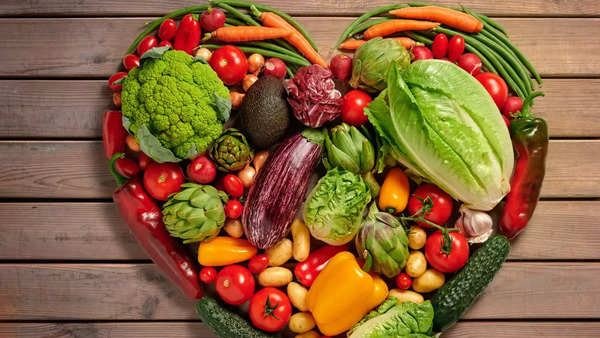What is hemoglobin?
Hemoglobin, also known as haemoglobin, is essentially a protein red blood cells Which helps in transporting oxygen throughout the body, especially from vital organs like the lungs to the brain and other parts of the body. However, maintaining healthy hemoglobin levels is essential for overall vitality, strength and energy. It cannot be denied that non-vegetarian foods like meat and organs and liver contain high amounts of hemoglobin. Iron and other hemoglobin-boosting nutrients, but what about those who don’t consume animal-based sources of iron? Well, here are some common plant-based foods that are equally rich non-heme iron Which can revive the low hemoglobin level in the blood naturally.
spinach
Spinach is a powerhouse for vegetarians who want to increase their hemoglobin levels. This green leafy vegetable is rich in non-heme iron, which is essential for the production of hemoglobin. In addition, spinach contains vitamin CWhich increases the absorption of iron from plant sources. Enjoy the benefits of spinach by eating it in salads, smoothies, or as a cooked side dish.
Lentils
Lentils are an excellent source of non-heme iron and provide a good amount of protein and fiber. They are versatile and can be added to soups, stews, salads and even made into lentil burgers. Lentils are also rich in folate, a B vitamin essential for red blood cell formation, which further aids in hemoglobin production.

Chickpeas
Chickpeas, also known as garbanzo beans, are rich in iron and are a great addition to any vegetarian diet. They can be used in a variety of dishes, from hummus and salads to curries and soups. Chickpeas also provide protein and fiber, making them a nutritious choice for maintaining healthy hemoglobin levels.
Quinoa
Quinoa is a complete protein and a good source of non-heme iron. It also contains essential amino acids, which are important for overall health. Quinoa can be used in salads, soups or as a substitute for rice. Its high iron content along with other nutrients makes it an excellent choice for increasing hemoglobin levels.

Pumpkin seeds
Pumpkin seeds are a rich source of non-heme iron and provide a crunchy and nutritious snack. They also contain magnesium, zinc and other essential nutrients. Pumpkin seeds can be eaten raw, roasted or sprinkled on salads, yogurt or smoothies to enhance their nutritional properties and maintain hemoglobin levels.
Tofu
Made from soybeans, tofu is a versatile plant-based protein that also contains non-heme iron. It is especially beneficial for vegetarians who want to increase their iron intake. Tofu can be incorporated into a variety of dishes, such as stir-fries, soups, and salads. Eating tofu combined with vitamin C-rich vegetables may further increase iron absorption.
Beetroot
Beetroot is high in iron and may help improve hemoglobin levels. It is also rich in folate and vitamin C, both of which aid in the production of red blood cells. Beetroot can be eaten roasted, juiced, or added to salads and soups. Including beetroot in your diet can improve blood health.
Sweet Potatoes
Sweet potatoes are a nutritious source of iron and are rich in vitamin A and fiber. They are also known for their antioxidant properties. Sweet potatoes can be baked, roasted or added to stews and casseroles. Their iron content and overall nutritional profile make them a valuable item for a vegetarian diet.

fortified cereals
Many breakfast cereals are fortified with iron, making them a convenient option for boosting hemoglobin levels. Look for cereals that are fortified with iron and other vitamins like vitamin B12, which is important for red blood cell formation. Consuming fortified cereals with vitamin C-rich fruits can increase iron absorption even more.
Broccoli
Broccoli is a vegetable that is rich in non-heme iron and vitamin C, which helps with iron absorption. It also contains folate, a B vitamin important for the production of red blood cells. Broccoli can be steamed, roasted, or eaten raw in salads. Adding it to your diet can help maintain healthy hemoglobin levels.
conclusion
To summarize, it can be concluded that a simple way for vegetarians to maintain healthy hemoglobin levels is to focus on the following: Plant-based sources The amount of iron and supplemental nutrients that aid in iron absorption. Including these ten foods in your diet can help you get the nutrients you need to support optimal hemoglobin production and overall health. Balancing your diet with a variety of iron-rich foods and vitamin C sources can also help maximize benefits and prevent iron deficiency.

















